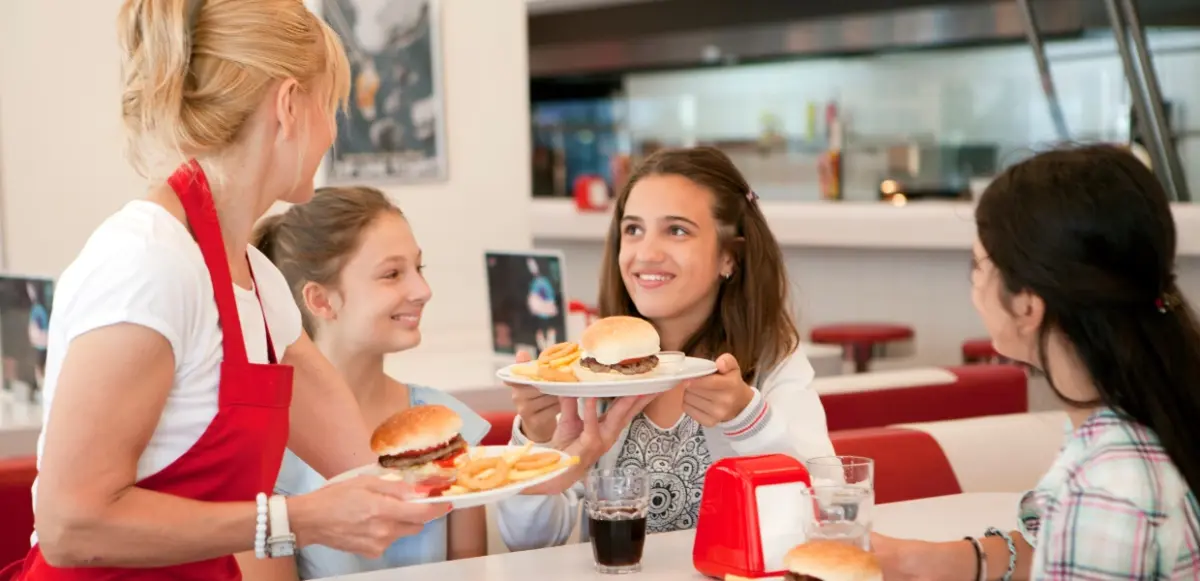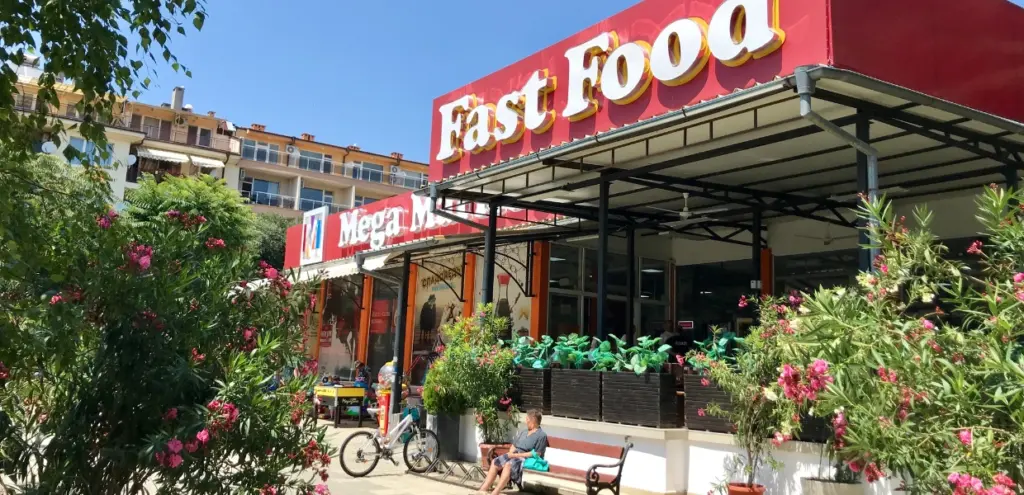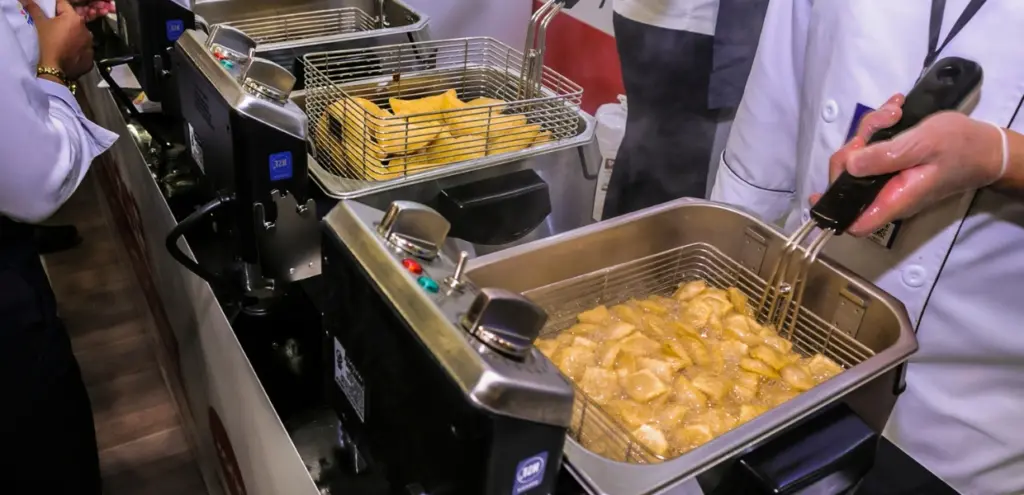All Articles
How to Start a Fast-Food Restaurant: A Step-by-Step Guide

Fast food is more than a convenient meal – it’s a staple of American life. The U.S. quick-service restaurant (QSR) sector generates hundreds of billions in annual sales. In fact, 60% of Americans eat fast food at least a few times per month (with 25% indulging multiple times per week). These figures underscore why learning how to start a fast-food restaurant can be so lucrative in the USA. Today’s market is huge and still growing; the U.S. fast food market reached $188.9 billion in 2024 and is projected to hit $261.9 billion by 2033. (Source)
This step-by-step guide will walk you through the process of starting a fast food restaurant in the USA – from initial market research and business planning to your grand opening and beyond. I’ll cover the essentials like permitting, funding, location selection, operations, and marketing. By the end, you’ll understand the key steps to turn your fast-food concept into a reality.
Step 1: Conduct Market Research

Before you flip a single burger or fry a single fry, invest time in thorough market research. Understanding the fast food industry and your local market is the foundation of a successful startup.
- Analyze Current Industry Trends and Consumer Preferences
Start at the macro level by reviewing industry trends. Today’s fast food customers increasingly demand convenience (drive-thrus, delivery), healthier menu choices, and tech-enabled services like mobile ordering and loyalty apps. - Define Your Target Audience
Clearly identify your target audience—busy young adults, families, college students, or health-conscious diners. For instance, adults aged 18–34 consume fast food most frequently, and men eat it more often than women (Source). If your concept focuses on gourmet or healthier fast food, higher-income millennials who value quality ingredients might be your ideal target. Align your menu and branding accordingly. - Conduct a Competitive Analysis
Equally critical is evaluating your local competition. Before launching, identify existing fast food and fast-casual eateries nearby. Determine what each competitor does well and where gaps exist. Perhaps your area has many burger restaurants but lacks a Mexican street-food concept like yours. Analyze competitors’ menus, pricing, customer feedback, and peak business hours to uncover opportunities for differentiation. - Refine Your Concept Based on Research
Use your findings to sharpen your concept. If research shows local customers prefer healthier options, include salads or grilled choices alongside traditional menu items. If nearby offices create demand for quick lunch service, prioritize speed and efficiency. Engage potential customers through surveys or online forums to assess interest. Consider contacting fast-food restaurant owners in other non-competing markets for valuable insights. Solid market research will validate your concept, ensuring there’s genuine demand before you move forward.
Step 2: Develop a Business Plan
With your market insights in hand, you’re ready to craft a comprehensive business plan. Think of your business plan as the recipe for your restaurant’s success – it forces you to think through all aspects of the venture and answer critical questions before you open your doors. A strong plan is also essential for attracting investors or lenders in Step 4.
To build a solid business plan, you must cover key sections such as executive summary, market analysis, marketing strategy, operational plan, and financial projections. Each section is crucial in defining your restaurant’s direction and viability. If you want a detailed breakdown of what to include in each section, check out our article. Understanding these components is crucial for setting a strong foundation for your restaurant’s success.
Remember, you don’t have to do it all alone – there are many resources to help with writing a business plan. The U.S. Small Business Administration (SBA) offers templates and guidance, and sample fast-food restaurant plans are available online. It may also be worthwhile to consult a mentor or advisor who has written business plans before. A polished business plan guides you and proves to others (bankers, investors, landlords) that you have a carefully thought-out strategy for your fast food startup. It’s the document that says, “Yes, I know what it takes to open and run this restaurant successfully.”
Step 3: Legal Requirements and Permits
Starting a fast food restaurant means navigating a variety of legal steps – but don’t let the paperwork intimidate you. Breaking it down into a checklist makes it manageable. You’ll need to formally establish your business entity and obtain several licenses/permits to operate legally. Requirements vary by state and city, but below are the common legal tasks:
For more details on permits and licenses to open a fast-food restaurant or other type of restaurant, check out our in-depth guide here. This article covers specific licensing requirements, application processes, and key compliance tips to help you smoothly navigate the legal aspects of your business.
It’s wise to create a checklist of all needed licenses and permits and their issuing agencies, then tackle them one by one. Contact your city’s small business office or permitting department – they can usually provide a guide for new restaurants. The U.S. SBA site also has a helpful general list of licenses/permits by business type.
Step 4: Secure Funding
Opening a fast-food restaurant requires a significant upfront investment. From lease deposits and kitchen equipment to marketing and initial food inventory, the costs can add up quickly. To launch successfully, securing the proper funding is crucial. In this step, you’ll need to explore financing options that align with your business needs, ensuring you have enough capital to cover early expenses and sustain operations during the initial months.
There are several ways to fund your restaurant, ranging from personal savings and bank loans to investors, crowdfunding, and small business grants. Each option has advantages and considerations, depending on your financial situation and risk tolerance. To understand the different funding sources available and determine the best approach for your restaurant, check out our detailed article here. This article walks you through the pros and cons of each method, helping you make an informed decision.
By securing adequate funding, you set your restaurant up for long-term success. Whether you work with investors, apply for a business loan, or explore alternative financing, having a well-structured plan before committing to significant expenses is essential. The last thing you want is to run out of funds mid-way through your launch. With financing secured, you can confidently move forward with selecting your location, signing a lease, and bringing your restaurant vision to life.
Step 5: Find the Right Location

In the restaurant world, the old adage “location, location, location” is not a cliché – it’s a critical decision that can make or break your fast food restaurant. A well-chosen location will help ensure a steady flow of customers and strong sales, while a poor location might leave even the best concept struggling. When choosing where to set up a fast-food restaurant, consider key factors such as foot traffic, visibility, accessibility, and the surrounding competition.
Beyond these basics, evaluating costs, zoning laws, and potential future developments in the area is just as important. The right location should align with your target audience and operational needs while providing room for growth. To understand how to thoroughly assess these elements and choose the best spot for your restaurant, check out our detailed guide here. This article walks you through the essential considerations to help you make a confident, informed decision.
Step 6: Design Your Kitchen and Dining Area
Once your location is secured, the next step is to design a layout that maximizes efficiency, enhances customer experience, and meets health and safety standards. For fast food, the focus is on quick service and smooth operations, which requires a clear division between the kitchen (back-of-house) and the customer area (front-of-house).
Kitchen (Back-of-House)
The kitchen is the powerhouse of your fast food operation. A well-organized kitchen not only speeds up order preparation but also ensures the safety of staff and food quality. Consider the following specifics:
- Flow and Layout:
Design the kitchen in a logical sequence—storage, prep, cooking, assembly, and service. Many fast food restaurants adopt an “assembly-line” or slight U-shaped layout. For example, a burger joint might have one station for grilling proteins, another for assembling sandwiches, and a third for wrapping or bagging orders. - Equipment Placement:
Group similar equipment based on your menu. Place fryers close to grills if you offer a mix of fried and grilled items, and position cold prep tables near the assembly line for quick topping additions. Ensure adequate ventilation and spacing around heat-producing appliances, meeting code requirements like having splash shields where necessary. - Food Safety and Code Compliance:
Integrate designated sinks for warewashing, mopping, and hand-washing in high-use areas. Clearly separate areas for raw food prep from ready-to-eat zones. For instance, have distinct prep tables for raw chicken and vegetables to prevent cross-contamination. - Storage Areas:
Allocate spaces for both cold storage (such as walk-in refrigerators or freezers) and dry storage with vertical shelving. Keep delivery access in mind—position your walk-in cooler near the delivery entrance rather than through the dining area. Also, ensure that cleaning chemicals and paper goods are stored separately per safety codes. - Assembly/Expo Area:
Define a specific zone where orders are finalized. This “expo” station, often at the counter, should enable smooth communication between the kitchen and the cashier. If you have a drive-thru, consider a dedicated mini-station for packaging orders before they reach the window. - Ergonomics and Efficiency:
Minimize unnecessary movements by placing frequently used ingredients and tools within easy reach. Plan your layout based on peak staffing numbers—if you expect four or more cooks, ensure enough space to work without interfering with each other. In some cases, opting for multifunctional equipment might help open up space.
Customer Area (Front-of-House)
In a fast food restaurant, the customer area must facilitate quick ordering and serve as an extension of your brand’s identity.
- Order Counter and Queue Management:
Design the order counter to accommodate 1-2 POS systems or cash registers, with clear signage and menu boards above or behind the counter. Use stanchions or floor markers to organize queues and prevent crowding. If self-order kiosks are part of your system, position them away from the main counter to avoid bottlenecks. - Seating Layout:
If you offer dine-in service, plan a mix of seating options—small tables for 2-4 people, communal seating, or counter seating. Follow guidelines that allocate around 11-14 square feet per seat, ensuring customers have enough room to move freely without obstructing pathways or exits. Booth seating along the walls can maximize space efficiency in busy periods. - Ambiance and Branding:
Use materials that are both durable and easy to clean (such as vinyl chairs, laminate tables, or sealed concrete floors). Choose a bright, energetic color palette and lighting that keeps the ordering area vibrant while providing slightly softer lighting in the seating zone for comfort. Incorporate branded elements like wall graphics, neon signs, or digital menu boards to reinforce your identity. - Practical Considerations:
Position trash receptacles and self-serve stations (for drinks or condiments) in locations that don’t interfere with customer flow. Ensure that pathways are at least 36 inches wide for accessibility and that sightlines clearly guide customers from the entrance to the ordering and pickup areas. - Optional Open Kitchen Concept:
For added transparency and customer trust, you might consider a partially open kitchen. Allowing customers a view of food preparation—similar to what you’d see at Subway or some burger joints—can enhance the dining experience by showcasing cleanliness and efficiency.
Support Areas
Don’t overlook the smaller but vital support spaces:
- Back-of-House Support: A small office area for administrative work, an employee restroom, and storage for personal items (lockers or shelves) help maintain staff morale and smooth operations.
- Design Collaboration: If possible, work with professionals experienced in fast food design to ensure that every element—from ADA accessibility to fire exits—is compliant and maximized for your specific operation.
By focusing on these specific design elements, your fast food restaurant can achieve a layout that supports rapid service, maintains high food quality, and reinforces your brand identity, ultimately creating an environment where both staff and customers thrive.
Step 7: Invest in Equipment and Supplies

While a general guide like The Essential Restaurant Equipment Guide provides a broad overview of restaurant equipment, fast food establishments have unique needs that set them apart. Unlike full-service restaurants, fast food kitchens prioritize speed, efficiency, and high-volume output, requiring specialized equipment that can handle rapid turnover while maintaining food quality.
- Cooking Equipment:
- Deep fryers are a staple in fast food operations, used for fries, nuggets, and other fried items. Unlike standard kitchen fryers, these need quick recovery times to keep up with continuous orders.
- Flat-top griddles or grills are also essential, ensuring consistent, high-speed cooking for burgers and sandwiches.
- Many fast food kitchens utilize assembly-line setups, where refrigerated prep tables hold ingredients for a quick sandwich, taco, or pizza assembly, reducing time wasted retrieving items from separate refrigeration units.
- Refrigeration & Storage:
- A walk-in cooler is crucial for high-demand products, complemented by reach-in refrigerators positioned near the cooking line for easy access.
- If frozen storage is necessary, freezers must be optimized for frequent access, as many fast-food establishments rely on pre-portioned frozen goods for consistency.
- Warming cabinets, heat lamps, and steam tables are often used to hold items at safe serving temperatures without compromising freshness, ensuring that prepped food stays warm between preparation and service.
- Front-of-House Efficiency:
- Fast food businesses rely on high-speed POS systems with digital menu boards or self-order kiosks to streamline customer interactions.
- Drive-thru equipment, including menu boards, speaker systems, and timing monitors, is essential for locations with drive-thru service, helping to reduce wait times and improve efficiency.
- Beverage stations, including soda fountains with built-in ice dispensers, play a key role in self-service drink areas, requiring regular maintenance to keep up with demand.
- Dishwashing & Waste Management:
- Fast food restaurants must consider disposable-friendly dishwashing setups, often opting for high-temp under-counter dishwashers for reusable utensils and tools.
- Maintaining efficient trash and recycling systems is crucial to handle large volumes of disposable packaging.
- Cleaning & Safety:
- Food-safe sanitizers, grease traps, and commercial ventilation systems are critical to meeting health and safety regulations.
Ultimately, while general restaurant equipment guidelines cover the basics, outfitting a fast-food restaurant requires a strategic selection of high-efficiency, heavy-use equipment designed to meet the demands of a fast-paced, high-volume environment.
Step 8: Implement QSR Technology
Technology plays a crucial role in the success of fast-food restaurants, enabling faster service, seamless ordering, and improved efficiency. From processing transactions to managing online orders and optimizing drive-thru operations, the right tools can make a significant difference in both customer experience and backend operations. Unlike traditional restaurants, quick service restaurants (QSRs) rely on technology to handle high-volume orders with minimal delays, making it as essential as quality kitchen equipment.
If you want to integrate the best tech solutions into your fast food business, understanding which systems matter most and how they work together is key. Whether selecting a POS system that syncs with digital orders, implementing self-service kiosks, or optimizing your drive-thru with real-time tracking, investing in the right technology will help streamline operations and boost profitability.
For a detailed breakdown of essential QSR technology, including recommendations on POS systems, online ordering platforms, inventory management, and customer engagement tools, check out TapTasty’s guide. This resource covers everything you need to know to leverage technology effectively in your fast-food restaurant.
Step 9: Hire and Train Staff
Your staff is the heart of your fast food restaurant, making both hiring and training crucial to success. A well-structured hiring process ensures you bring in reliable, efficient workers, while an intense training program helps them perform at their best. Given the fast-paced nature of quick-service restaurants (QSRs), your employees need to work quickly, accurately, and with great customer service—all of which come from proper recruitment and onboarding.
Finding the right employees means understanding your staffing needs, recruiting through the right channels, and vetting candidates carefully to ensure they fit your restaurant’s fast-moving environment. Once hired, effective training on food prep, safety, and service standards helps employees adapt quickly and maintain consistency. Additionally, investing in ongoing coaching and team-building reduces turnover, keeping your restaurant running smoothly.
For a comprehensive guide on hiring employees for your fast-food restaurant, check out TapTasty’s article on hiring. Once your team is in place, explore TapTasty’s training guide to ensure they are well-prepared to deliver fast, high-quality service.
Step 10: Marketing and Branding
With your restaurant nearly operational, it’s time to focus on marketing and branding to bring in customers and keep them coming back. Effective marketing doesn’t have to be expensive, but it must be consistent and creative. A well-planned strategy includes branding, online presence, promotions, and community engagement.
- Establish a Strong Brand Identity
Your brand is more than just a logo—it’s the personality and promise of your restaurant. A recognizable and consistent brand builds customer trust and loyalty.
- Ensure your name, logo, and color scheme are used across all materials—signage, menus, staff uniforms, website, and social media.
- Craft a simple brand message or slogan that highlights your unique selling point (e.g., “Best Gyros in Town, Fast and Fresh!”).
- Create an atmosphere that reflects your brand—whether it’s a fun, family-friendly space or a sleek, modern design.
- Consistency in branding helps customers remember your restaurant and associate it with quality.
- Build a Strong Online Presence
Most customers will look up your restaurant online before visiting. Make sure your digital footprint is strong.
- Website & SEO: Have a simple, mobile-friendly website with your location, hours, menu, and contact info. Optimize it for local searches like “best fast food in [Your City]” to improve visibility.
- Google My Business & Directories: Set up and update your Google listing to appear on Google Maps and search results. Also, list your business on Yelp, TripAdvisor, and other directories.
- Social Media Marketing:
- Create profiles on Facebook, Instagram, and possibly TikTok to share food photos, behind-the-scenes content, and promotions.
- Use hashtags (#fastfood, #[YourCity]Eats) to boost visibility.
- Engage with customers—reply to comments and messages, and encourage user-generated content by resharing customer photos.
- Run contests or giveaways to drive engagement.
- Manage Online Reviews and Reputation
Online reviews can make or break a restaurant’s reputation.
- Encourage satisfied customers to leave Google and Yelp reviews—even a simple request like “Enjoyed your meal? We’d love your review!” can help.
- Respond professionally to both positive and negative reviews. Thank happy customers and address concerns from dissatisfied ones.
- A well-managed online reputation can build credibility and attract new customers.
- Local Promotions and Advertising
Offline marketing efforts still play a big role in attracting local customers.
- Grand Opening Specials: Offer limited-time deals, such as “Buy One, Get One Free” or discounted combo meals to drive first-time visits.
- Flyers & Direct Mail: Distribute menus and discount offers to nearby homes, offices, and community centers.
- Local Media & Influencers: Contact food bloggers, radio stations, and local newspapers for features or reviews.
- Special Promotions: Consider Taco Tuesdays, Happy Hour Deals, or Student Discounts to attract different crowds.
- Engage with the Community
Becoming a recognized name in your neighborhood strengthens your customer base.
- Participate in local events, fairs, and school fundraisers to introduce your food to new customers.
- Offer sponsorships or donate meals to local sports teams, schools, or charity events.
- Host a “fundraiser night” where a percentage of sales supports a local cause.
- Digital Advertising for Increased Visibility
If budget allows, online advertising can be a powerful tool.
- Facebook & Instagram Ads: Target ads to users within your city who are interested in dining out.
- Google Ads: Show up at the top of search results for keywords like “best burgers in [Your Town].”
- Delivery App Promotions: If partnered with apps like UberEats or DoorDash, participate in app promotions for increased exposure.
- Track and Adjust Your Marketing Efforts
Marketing is an ongoing process—track what works and refine your approach.
- Use promo codes or customer surveys to see which marketing efforts attract the most customers.
- If flyers aren’t working, focus on social media or influencer marketing.
- Adapt and experiment—sometimes, a fun viral challenge or a unique giveaway can get people talking about your restaurant.
Step 11: Grand Opening and Operations Management

After all the planning and preparation, it’s time to open your fast-food restaurant to the world. Your Grand Opening is a key moment to make a strong first impression and generate buzz. But success doesn’t end there—ongoing operations will determine your long-term growth. This final step covers strategies for a great opening and tips for efficient daily management.
Grand Opening Planning
A successful launch can set the tone for your business. Here’s how to make your grand opening a hit:
- Soft Opening First – Consider a soft opening with limited guests or minimal advertising. This trial run helps you fine-tune operations, test your kitchen workflow, and fix any issues before the big day. Invite friends, family, or community members and gather feedback.
- Promote Your Grand Opening – Use social media, local advertising, and banners to spread the word. Update your Google listing with your opening date and notify local news outlets or bloggers. A press release or listing on community event calendars can boost visibility.
- Offer Opening Specials – Attract first-time customers with promotions like “50% off one menu item” or “Free fries with every order” during opening weekend. A raffle or giveaway can also create excitement and encourage customer engagement.
- Create a Festive Atmosphere – Treat your opening like a celebration. Consider a ribbon-cutting ceremony, music, balloons, or a fun attraction like a balloon artist for kids. Engaging events make your restaurant memorable and encourage foot traffic.
- Be Fully Staffed and Prepared – Expect a higher-than-usual turnout. Schedule extra staff, stock up on inventory, and hold a pre-shift meeting to ensure your team is ready. Smooth service on opening day will help turn first-time visitors into loyal customers.
- Collect Customer Contacts – Take advantage of opening day traffic by encouraging sign-ups for your email list or loyalty program. Offering a small incentive (like a free drink on their next visit) can boost participation.
Executing a Smooth Opening Day
On launch day, monitor everything closely. Keep lines moving, engage with customers, and address any issues immediately. If service slows down, have a manager assist in the kitchen or on the floor. Customers should leave with a positive experience, even if minor issues arise.
At the end of the day, debrief with your team. Discuss what went well and what could be improved. Use this feedback to refine your operations moving forward.
Long-Term Operations Management
Once the opening excitement fades, daily operations become the focus. Here are key areas for sustained success:
- Maintain Consistency
Customers return because they know what to expect. Standardize recipes, portion sizes, and service processes. Use checklists for opening and closing duties and train staff to follow clear procedures. Consistency builds trust and repeat business.
- Focus on Speed and Efficiency
Fast service is a top priority. Track average order times and identify bottlenecks. If an item takes too long to prepare, adjust workflows or prep more ingredients in advance. Small efficiency gains, like rearranging kitchen stations or adding an extra fryer, can significantly reduce wait times.
- Control Inventory and Costs
Keep a close eye on food and labor costs. Track inventory against sales to detect waste or theft. Conduct weekly stock counts and compare them to POS reports. Adjust ordering quantities to prevent overstocking or shortages. Managing costs early helps maintain profitability.
- Prioritize Cleanliness and Maintenance
Regular cleaning and equipment maintenance prevent costly breakdowns. Assign daily, weekly, and monthly cleaning tasks to ensure everything stays sanitary and operational. Surprise health inspections will happen—staying prepared ensures compliance.
- Listen to Customer Feedback
Monitor online reviews and in-person comments to identify trends. If multiple customers mention slow service or an unpopular menu item, take action. Engaging with customer feedback (and making visible improvements) shows customers that their opinions matter.
- Train and Retain Your Staff
Your team is your biggest asset. Ongoing training prevents bad habits and keeps service levels high. Recognizing hard work and offering incentives can reduce turnover, which is a major issue in the fast food industry. Happy employees lead to better customer experiences.
- Stay Adaptable
Consumer preferences change. Be open to adjusting your menu, pricing, or marketing based on trends and demand. If delivery orders increase, optimize operations to handle them efficiently. Keeping an eye on industry shifts will keep your business competitive.
- Monitor Your Finances Regularly
Review daily sales reports and monthly profit/loss statements to ensure you meet financial goals. Catch issues early—whether it’s rising food costs or unexpected expenses—so you can adjust before they impact your bottom line. Here is an article that can help you understand restaurant finances.
Operating a fast-food restaurant requires balance—maintaining consistency while adapting to new challenges. Strong systems, smart cost management, and great customer service are the keys to long-term success. Over time, you’ll establish a rhythm that keeps operations smooth and customers satisfied.
Most importantly, keep the passion that led you to open this restaurant alive. Celebrate milestones, listen to your customers, and always strive to improve. With dedication and smart management, your restaurant can thrive—and perhaps even grow into multiple locations.
Conclusion
Starting a fast-food restaurant is an ambitious journey, but with careful planning, diligent execution of each step, and adaptability, it’s entirely achievable. By conducting thorough market research, crafting a solid business plan, securing the proper permits and funding, choosing a prime location, designing an efficient operation, leveraging modern QSR technology like TapTasty’s integrated solutions for ordering, operations, and marketing, hiring and training a great team, and executing savvy marketing, you set yourself up for a thriving business. Stay committed to quality, speed, and customer satisfaction every single day. With passion and persistence, you’ll not only open your doors successfully but keep them busy with satisfied customers. Good luck with starting your fast-food restaurant – here’s to seeing your dining room full and your drive-thru line wrapped around the block!
 20 March 2025
20 March 2025 15 min read
15 min read

